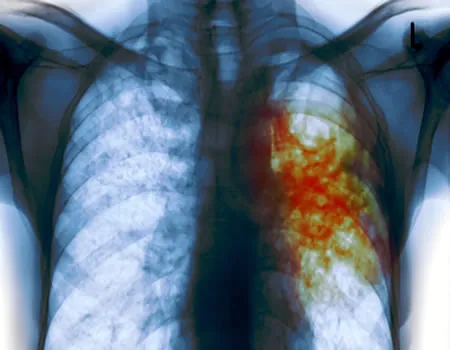The Federal Government has raised concerns as it revealed that only 37% of drug-resistant tuberculosis (DR-TB) cases in Nigeria received treatment in 2024 despite the estimated 9,400 cases of DR-TB in the country 2024.
This low enrollment in DR-TB treatment has raised concerns about the ability of the country’s healthcare system to effectively manage and control the spread of the disease.
The Coordinating Minister of Health and Social Welfare, Prof Muhammed Ali Pate, at a press briefing to commemorate the World Tuberculosis Day in Abuja, disclosed that only about 3,500 cases were reported and treated, leaving a significant gap in treatment coverage.
The Minister who was represented by Dr Nse Akpan, Director of Port Health Services, explained that in an effort to address this challenge, the government has initiated a nationwide Drug-Resistant Survey to determine the actual burden of DR-TB in Nigeria.
“The survey aims to provide accurate data on the prevalence of the disease, which will inform policy decisions and guide the development of effective interventions.”
“Furthermore, the government is working to improve access to DR-TB services by engaging and capacitating local government areas (LGAs) and community levels. This initiative aims to ensure that more patients receive timely care and treatment, thereby reducing the spread of the disease.”
The Minister also raised concerns that despite notable progress, Nigeria still faces critical gaps in TB control, some of which include stock out of GeneXpert cartridges for TB testing, Category-1 (CAT-1) TB medications, and leprosy treatments. This is a global challenge which is gradually being resolved
“Funding challenges which is further heightened by the new US policy of halting the USAID funding, which previously contributed to detecting nearly 50% of Nigeria’s TB cases.
There are coordinated efforts by the government through the Sector Wide Approach in my office to nip this in the bud.”
“Limited health facility coverage, with only 56% of facilities providing DOTS services in 2023—about 23,000 out of 40,562 facilities nationwide.
“We are currently expanding diagnostic and treatment services through public and private healthcare facilities. Furthermore, we also leverage on other programmes to deliver TB services.”
“Inadequate childhood TB case notification, with 63% of the estimated 59,000 childhood TB cases in 2024 being officially recorded.”
Pate, however, said, the is deploying many innovations including the integration of childhood TB screening and treatment into Reproductive, Maternal, Newborn, Child, and Adolescent Health plus Nutrition (RMNCAH+N) programs.
“The theme for this year’s World TB Day—“Yes! We Can End TB: Commit, Invest, Deliver” with the Slogan: “WE FIT DO AM” reflects our determination to end TB through unwavering commitment, increased investment, and efficient service delivery.
“To mark this year’s event, we have lined up a series of impactful activities, including: Pre-World TB Day press briefing. Training sessions for school teachers and orphanage coordinators on TB awareness
“TB sensitization programs for school children nationwide. Community and prison outreach programs in all states and the Federal Capital Territory (FCT). TB awareness campaigns in religious institutions (churches and mosques)”,
“Public roadshows and awareness walks. The TB Walkathon: Encouraging Nigerians to take 150,000 steps in March to raise TB awareness.
“Media engagements, including TV and radio discussions. Webinars to educate the public on TB prevention and treatment. SMS and social media awareness campaigns.”
Pate also disclosed that In line with government’s commitment to Universal Health Coverage (UHC), the National Strategic Health Development Plan II (NSHDP II), and the National Strategic Plan for TB (2021-2026), our key priorities moving forward include:
“Enhancing TB awareness through widespread community and facility-based testing campaigns. Expanding TB diagnostic and treatment services across public and private health facilities nationwide.
“Integrating childhood TB services into Reproductive, Maternal, Newborn, Child, and Adolescent Health plus Nutrition programs.
“Decentralizing DR-TB care to LGAs and communities to improve treatment enrollment for diagnosed patients.
“Scaling up active community TB case-finding interventions, especially for key and vulnerable populations, including children.”
“Conducting national and sub-national TB prevalence surveys to strengthen data-driven decision-making.”
“This approach will ensure greater TB detection, treatment, and prevention, ultimately improving health outcomes nationwide.” He added.
